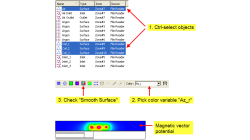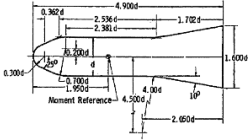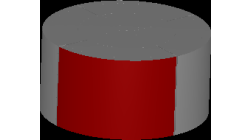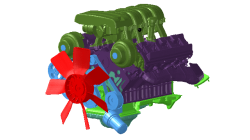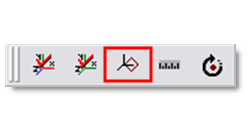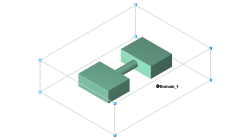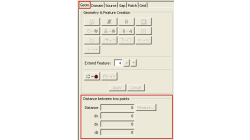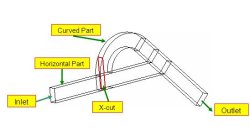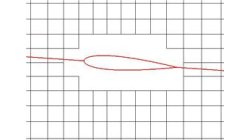- Home
- Resources
- Tips & Tricks
Tips & Tricks
Tracking Multiple Variables with Multiple Legends
When post-processing with CFD-VIEW, one may wish to display two different variables on two different objects. This requires the use of two legends to correspond to the different color mapping of the variables. The legend tracking feature in CFD-VIEW can be used to achieve this. If this topic is of interest to you, please read on.
Abraham
Meganathan
CFD
Improvements to Parallel Simulation Setup in CFD-FASTRAN
Setting up and launching a parallel simulation has become much simpler and easier in FASTRAN. This note discusses some of these developments. Let’s start with things that have not changed. There are still two versions of CFD-FASTRAN solvers for parallel cases. The difference between the two versions is the underlying parallel communication mechanism, the choice of which is decided by the type of mesh used.
Abraham
Meganathan
CFD
Simulation of the Hypersonic Flow Past a Blunted Cone-cylinder-flare (HB-2) using CFD-FASTRAN
Study of supersonic flows is of high interest for a wide variety of problems including design of high speed planes and other related applications [1]. This user tip presents a validation of numerical methods against experimental data.
Abraham
Meganathan
CFD
Transparency Feature in CFD-GEOM
In CFD-GEOM, certain entities can now be set to transparent. This option allows you to add transparency effects to your surfaces, faces, and volumes. This can be an excellent way to add shadows/colors and glass effects to the model.
Abraham
Meganathan
CFD
Making it Easy to Add a Box Source in CFD-VisCART
Sources are used in CFD-VisCART to refine the grid in localized regions of the domain. One of the many types of sources available is the Box Source where the user specifies a cuboid box around the region a finer grid is required. In the earlier versions, the user would have to add a Box Source and then specify its X, Y and Z extents to position the box in the desired location.
Abraham
Meganathan
CFD
Using the Construction Plane in CFD-GEOM
Point entities in CFD-GEOM are placed in an XYZ (Cartesian) coordinate system. The Construction Plane tool enables you to position a plane in space, and place points on that plane to generate curve entities.
Abraham
Meganathan
CFD
Hole Detection Feature in CFD-VisCART
CFD-VisCART can handle geometries with small gaps, cracks and overlapping parts, but what if there is a big hole or opening in one of the parts that the user is not aware of? The grid will flow through this opening and the result will be a mesh that has cells both inside and outside the model. This leaves the user with the near impossible task of finding this opening. In CFD-VisCART, a Hole Detection feature has been introduced that performs this task for the user.
Abraham
Meganathan
CFD
Distance Measuring Tool in CFD-VisCART
CFD-VisCART has a simple and easy-to-use tool for measuring the distance between two points in a geometry. This tool can be found under the Geom tab.
Abraham
Meganathan
CFD
Clipping of X, Y, Z, Arbitrary Cuts and Iso-Surfaces in CFD-VIEW
In CFD-VIEW, performing X, Y, Z, arbitrary cut and iso-surface operations on volumes yield surface objects. One may desire to visualize and/or perform calculations in a user specified spatial range of the surface instead of the whole surface.
Abraham
Meganathan
CFD
Blanking Option in CFD-VIEW for Visualizing Chimera Grids
CFD-FASTRAN uses closed surfaces, such as walls or blocked regions, to create Chimera holes (or blanked regions) in a grid. By default, the number of buffer layers is set to 1. This means that a closed surface will cut a hole in any mesh that overlaps it, and the initial "blanking" of grid cells defines the hole.
Abraham
Meganathan
CFD
